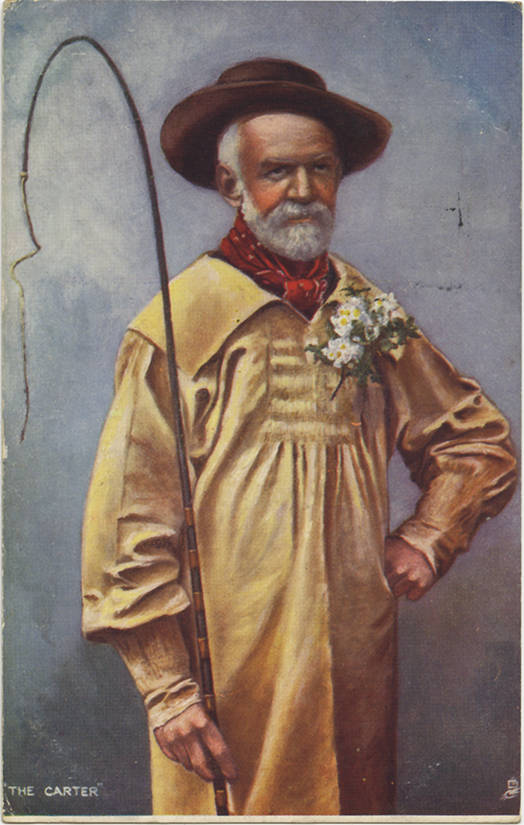
On Tuesday, I posed a question to my high-schoolers in the music-history course I teach online for Memoria Academy. The question sought to stir their thoughts on the technological changes affecting music, the arts, and life itself during the fourteen years since I recorded the lectures for Discovering Music. The majority of statements in those lectures ring as true today as they did in the hot Texas summer of 2009 when we filmed the sequences. Yet certain statements betray their age.
For example, in Lecture 3, when discussing how style influences a musician’s understanding of tempo (speed), I referred to the overarching rhythms of dance, stating that young people in any generation can snap their fingers to the popular dances of their day. Dance rhythms, after all, lie behind many of the so-called Classical compositions, from parts of Handel’s Water Music to passages in Mahler’s symphonies. Musicians performing an instrumental suite in J. S. Bach’s day could snap their fingers to a sprightly gavotte or a dignified pavane, even before the first note was sounded. Just a mention of dances like the minuet or the ecossaise would start sound pictures in the audiences of Beethoven’s era.
“Yet,” I asked these teenagers, “does that statement sound archaic today?” Initially, a couple of them said “not really.” Then they reflected. One pointed out that not many teenagers dance these days. Or if they do, it’s all “free form” dance, which means the idea of specific steps executed at specific speeds goes out the window. Yes, there are plenty of rhythms dominating their soundscapes. But an irrepressible feeling for popular dance styles is not among them.
 With that, the wider discussion was launched. “What about the iPod?” I asked. They grinned: I might as well have brought up the buggy whip. Still, they seemed to enjoy traveling back (through PowerPoint slides) to the first, cute “Classic” model iPod from 2001 with its 5 or 10 GB of memory. My images progressed through several models up to the final iPod made in 2019 that leapt to 256 GB. But by 2019, there were other new kids on the block. The iPod, so to speak, was guillotined.
With that, the wider discussion was launched. “What about the iPod?” I asked. They grinned: I might as well have brought up the buggy whip. Still, they seemed to enjoy traveling back (through PowerPoint slides) to the first, cute “Classic” model iPod from 2001 with its 5 or 10 GB of memory. My images progressed through several models up to the final iPod made in 2019 that leapt to 256 GB. But by 2019, there were other new kids on the block. The iPod, so to speak, was guillotined.
“Think about that,” I sighed. “In just eighteen years, a ground-breaking device that had exploded the news, captured everyone’s hearts (and wallets), and rendered all types of earlier, wide-spread listening technology obsolete quickly became obsolete itself.”
And not just obsolete, they added, but almost comical in its limitations. That’s why their parents have old iPods lying around in drawers (as I do), right next to the buggy whips.
We went farther. They brought up the usual suspects: SnapChat, Tik-Tok, Instagram, What’s App and a few things I had not yet heard of. They agreed that Facebook was over, or only attractive to their mothers and grandmothers. We took up the topic of streaming services. Music and film on demand does not strike them as spectacular: they seemed almost bored by the idea. I, on the other hand, am sad they will never experience looking forward for a whole year to a Christmas-Eve broadcast of Amahl and the Night Visitors or Mary Martin’s Peter Pan.
 There was also talk about Alexa. “My mom won’t have it,” one told me. I was right there with that mom, although I understand why people are enchanted by it. I confessed that the best use I found for Alexa occurred when I took my two North Carolina grandchildren up to visit my Virginia granddaughter this past summer and, while making pot roast, asked my son’s Alexa to conjure up the song Purple People Eater. With ages 8, 7, and 6, the trio of children produced 60 minutes of hilarious dance-antics, shrieking over and over “Alexa, play Purple People Eater,” all as I filled the crock pot and chopped a salad.
There was also talk about Alexa. “My mom won’t have it,” one told me. I was right there with that mom, although I understand why people are enchanted by it. I confessed that the best use I found for Alexa occurred when I took my two North Carolina grandchildren up to visit my Virginia granddaughter this past summer and, while making pot roast, asked my son’s Alexa to conjure up the song Purple People Eater. With ages 8, 7, and 6, the trio of children produced 60 minutes of hilarious dance-antics, shrieking over and over “Alexa, play Purple People Eater,” all as I filled the crock pot and chopped a salad.
The next topic they put forth was GPS and Google Earth. I confessed something that has bothered me, so I’ll confess it to you. Finding my way has never been a problem. I simply go to a new city, rattle around a bit, and, boom, the main streets and districts get etched in my mind. Our move to Winston-Salem in 2018 marked the first time that a new location was experienced through the dubious assistance of GPS. Four years later, I still find it hard to envision the layout of this city! True, it twists around a lot . . . but so does Prague, and I’ve got it straight.
(“Yeah,” piped up one student,” technology really does make you stupider, doesn’t it?”)
Surprisingly the hot-button issue I thought would elicit the most commentary –Artificial Intelligence—seemed barely on their radar. Several were following the issue but, overall, these students are busy with their advanced study of Latin and mathematics, literature, art, violin, piano, and ballet, and that is where their focus rightly is. Nonetheless, I wanted to scream: “A big, hungry bear lies in wait for you around the corner, unless you can figure out how to tame it.” But I didn’t. We still have a long semester ahead of us.
What conclusions do I draw from all this? I’m not entirely sure, at least not yet. But I’m glad I set up the discussion before spending the next chunk of the class on György Ligeti’s mesmerizing Six Bagatelles for woodwind quintet. I hope our discussion will serve as a useful frame for everything we do for the rest of the semester, starting with our two topics next week: the development of keyboard instruments (specifically clavichord, harpsichord) and the state of the arts and science at the court of Louis XIV.
I can offer this conclusion, though: obsolete iPods, a dance-crazed French King, and the impact of Edison’s gramophone reflect the varied strains that create the weave of music history. This is why the Fine Arts lie (or by-golly-Ned ought to lie) at the core of every young person’s studies. But then again, you’ve heard me say that before, haven’t you?




You’re on your game with this one, Carol😁
Oh, I do miss class with Dr. Carol! I envy those teenagers, and hope they appreciate the wonderful instruction they’re getting.
Thank you for all you do for the arts, especially perpetuating it in the next generation.
14 years! Say it ain’t so! Time marches on and cutting edge becomes passe. Thanks for the update on current events.